Unveiling Guanghui Temple Pagoda: A Hidden Gem in China’s Cultural Heritage
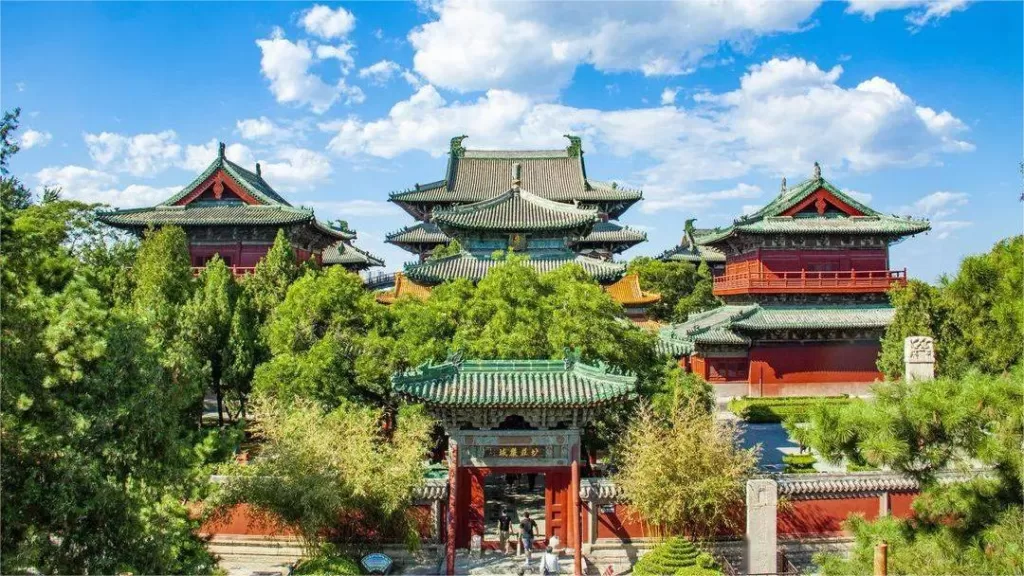
An Essential Guide to Visiting Guanghui Temple Pagoda
In This Guide
- An Essential Guide to Visiting Guanghui Temple Pagoda
- The Rich History and Legends of Guanghui Temple Pagoda
- Main Highlights: What You Absolutely Can’t Miss
- Planning Your Visit: A Practical Guide
- Tickets: Prices, Booking, and Tips
- How to Get There: A Complete Transportation Guide
- Local Cuisine and Accommodation Nearby
- Frequently Asked Questions
- Final Thoughts on Your Trip
Nestled in the historic heart of Zhengding County, the Guanghui Temple Pagoda (广惠寺华塔) stands as a stunning testament to the architectural brilliance of the Tang Dynasty. This beautifully preserved pagoda, often referred to as Huata, meaning “Flower Tower,” is not just a visual marvel but also a portal into China’s rich cultural heritage.
A Journey Through History

Guanghui Temple Pagoda.
As you approach the pagoda, you’ll be greeted by manicured grounds that invite you to explore further. The surrounding temple complex houses an intriguing collection of stele, unearthed during archaeological excavations in Zhengding, providing insights into the temple’s past and its significance in Chinese history. The pagoda itself, with its intricate sculptures of Buddhas, elephants, and lions, resembles a blooming bouquet—a unique feature that has captivated visitors for centuries.
Accessibility and Visitor Experience
One of the many advantages of visiting Guanghui Temple Pagoda is its accessibility. Located just a 20-minute cab ride from Shijiazhuang, it is easily reached by public transport as well. The temple is open 24 hours a day, brightly lit until 11 PM, making it an ideal spot for evening photography or a calming night visit, especially during the hot summer months.
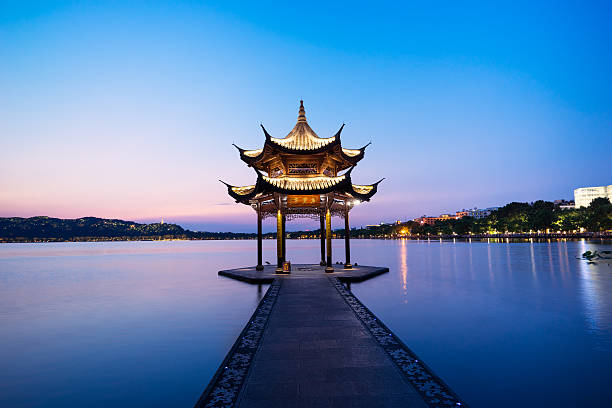
Guanghui Temple Pagoda.
For a nominal fee of 15 RMB, you can ascend to just below the pagoda’s flower-like crown, where panoramic views of Zhengding await. This vantage point offers an unparalleled perspective of the surrounding landscape, allowing you to appreciate the beauty of this ancient town and the harmony of its historic architecture.
Planning Your Visit
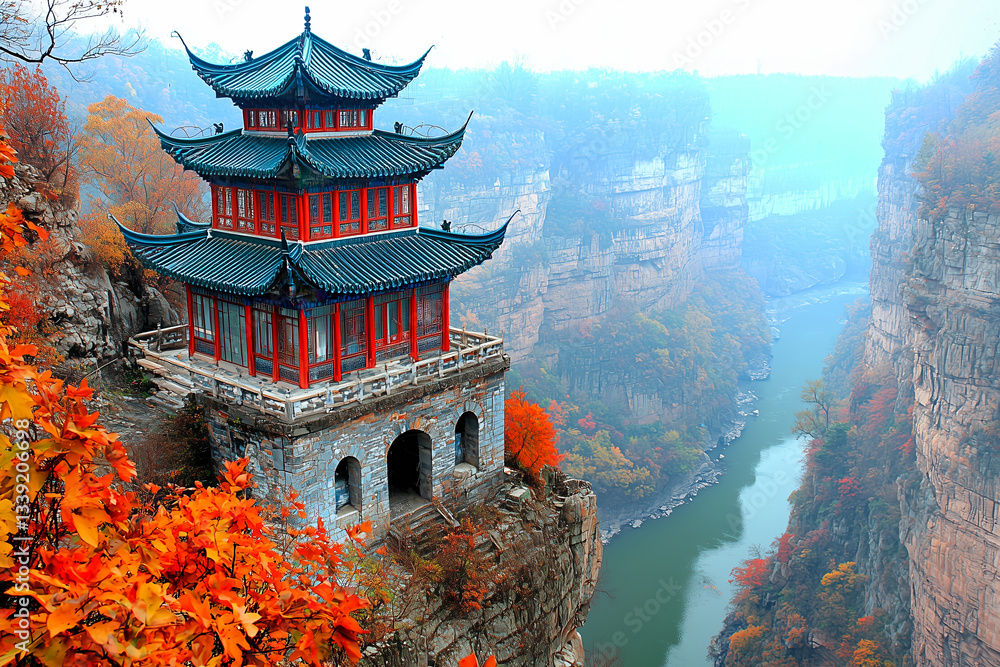
Guanghui Temple Pagoda.
Whether you’re a history buff, a photography enthusiast, or simply seeking a serene escape from the bustling cities, Guanghui Temple Pagoda promises an enriching experience. With its blend of cultural significance and stunning aesthetics, this landmark is a must-visit for anyone looking to immerse themselves in the rich tapestry of Chinese history and spirituality.
The Rich History and Legends of Guanghui Temple Pagoda
A Journey Through Time at Guanghui Temple Pagoda
Nestled within the serene grounds of Guanghui Temple (广惠寺), the Huata Tower (华塔) stands as a stunning testament to the architectural brilliance of the Tang Dynasty. This pagoda, renowned for its striking design, has not only survived the ravages of time but has also become a focal point of local legends and historical significance.
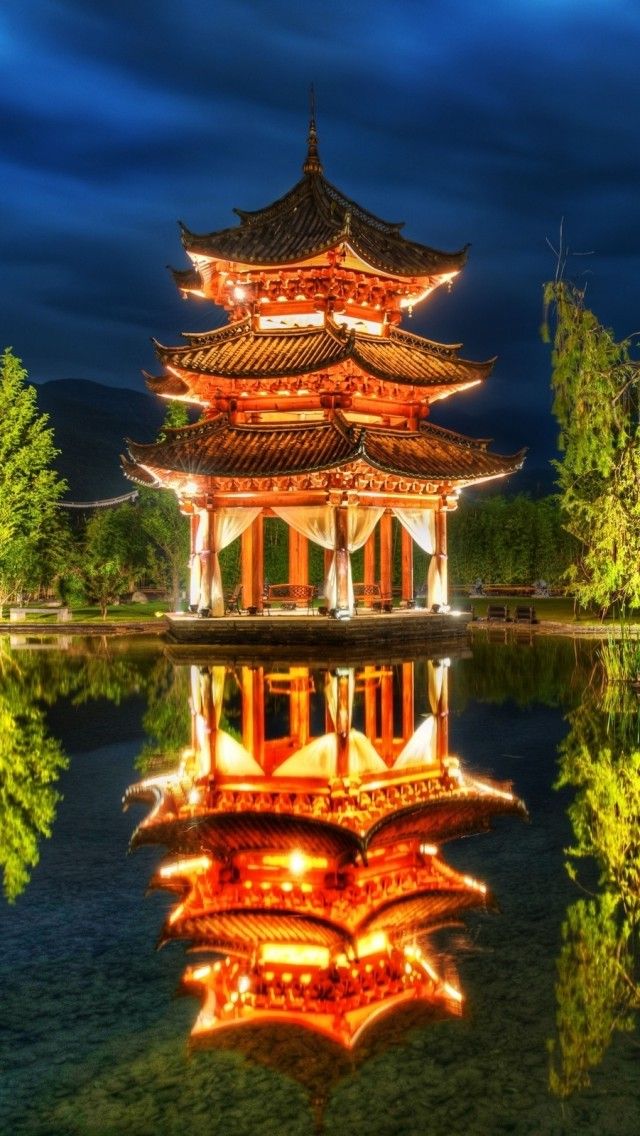
Guanghui Temple Pagoda.
Historical Significance
The Guanghui Temple and its pagoda were constructed during the Tang Dynasty, a period noted for cultural flourishing and the advancement of Buddhist architecture in China. The pagoda itself is often referred to as the ‘Flower Tower’ (华塔) due to its unique bouquet-like shape, which is adorned with intricate carvings of Buddhas, mythical creatures, and floral motifs. This artistic representation reflects the spiritual and aesthetic values of the time, showcasing the harmony between nature and divinity.
Over the centuries, Guanghui Temple has been a vital center for Buddhist worship and learning. It served as a pilgrimage site for devotees and played a pivotal role in the dissemination of Buddhist teachings throughout the region. The temple’s grounds are also home to a collection of stele, unearthed during archaeological excavations, which provide insight into the temple’s storied past and its connections to various dynasties, including the Song and Ming.
Legends and Folklore
The pagoda is steeped in local legends that add a layer of mystique to its already compelling history. One popular tale recounts how the pagoda was built overnight by a group of dedicated monks who were inspired by a divine vision. According to this legend, the monks prayed fervently for guidance, and in their dreams, they were shown the ideal design for the pagoda. Upon awakening, they worked tirelessly through the night, and by dawn, the magnificent structure had risen from the earth, a miracle that solidified its sacred status.

Guanghui Temple Pagoda.
Another legend speaks of the protective spirit of the pagoda, believed to safeguard the town from disasters and misfortune. Local inhabitants often recount stories of how the pagoda’s presence has shielded them during natural calamities. This belief has fostered a deep sense of reverence among the community, who see the pagoda not just as an architectural marvel but as a guardian of their heritage.
Visiting the Pagoda Today
Today, the Guanghui Temple Pagoda remains a cherished landmark, drawing visitors from around the world who seek to immerse themselves in its rich history and serene ambiance. The temple is free to enter, and for a nominal fee, visitors can climb to the base of the pagoda to enjoy panoramic views of Zhengding County. As night falls, the pagoda is illuminated, creating a breathtaking sight that is perfect for evening strolls and photography.
Access to the temple is convenient, located just a short drive from the bustling center of Shijiazhuang. Whether you’re a history enthusiast, a spirituality seeker, or simply a curious traveler, the Guanghui Temple Pagoda offers a captivating glimpse into China’s illustrious past, adorned with legends that continue to inspire awe today.
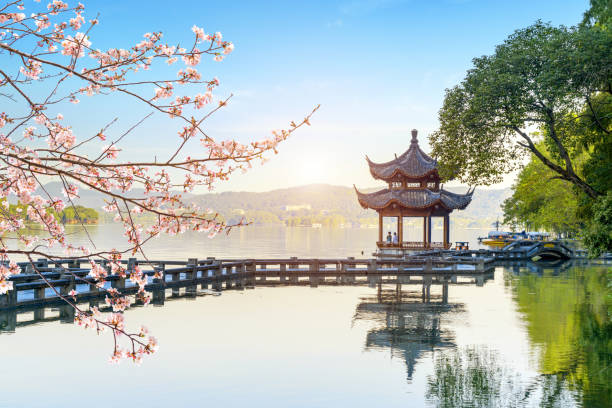
Guanghui Temple Pagoda.
In conclusion, a visit to Guanghui Temple Pagoda is not merely an excursion; it’s an invitation to engage with the stories and traditions that have shaped this remarkable monument through centuries.
Main Highlights: What You Absolutely Can’t Miss
Discovering the Wonders of Guanghui Temple Pagoda
Nestled in the historical town of Zhengding County, the Guanghui Temple Pagoda (广惠寺华塔) stands as a testament to China’s rich cultural heritage. This well-preserved Tang Dynasty structure is not just a visual delight; it offers a glimpse into the architectural grandeur and spiritual significance of ancient China. Here are the main highlights that you absolutely cannot miss when visiting this iconic site.
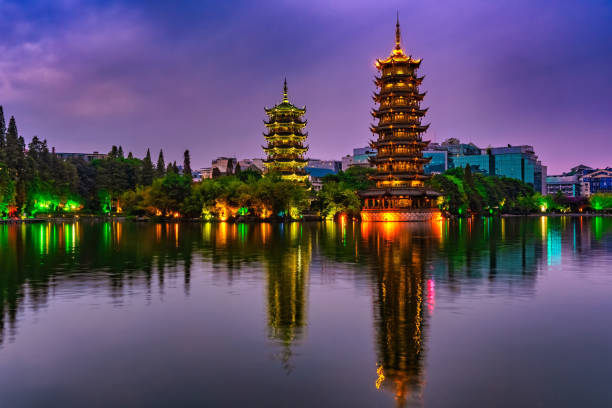
Guanghui Temple Pagoda.
1. The Architecture of the Pagoda
The Huata Tower, often referred to as the Flower Tower due to its unique bouquet-like design, is a masterpiece of ancient Chinese architecture. Its intricate carvings depict various motifs, including sculptures of Buddhas, elephants, and lions, showcasing the artistry of the Tang Dynasty. Climbing the pagoda provides breathtaking views of Zhengding City, offering a chance to appreciate the harmonious blend of nature and architecture.
2. Rich Historical Context
Guanghui Temple itself has a storied past, with origins tracing back to the Tang Dynasty (618–907 AD). The temple grounds feature a collection of stele and artifacts uncovered during archaeological excavations, providing valuable insights into the history of Zhengding and its cultural significance. Don’t miss the English signage that offers brief explanations, making it easier for international visitors to connect with the site’s history.
3. Serene Temple Grounds
The manicured grounds surrounding the pagoda create a peaceful oasis away from the hustle and bustle of urban life. Take a leisurely stroll through the temple gardens, where the tranquility allows for reflection and appreciation of the site’s beauty. The gardens are meticulously maintained, adding to the overall ethereal ambiance of the area.

Guanghui Temple Pagoda.
4. Accessibility and Convenience
Getting to Guanghui Temple Pagoda is a breeze. Located just a 20-minute cab ride from Shijiazhuang, or accessible via bus 177 from the medical university stop, it’s easy to incorporate into your itinerary. The temple is open until 11 PM, beautifully illuminated at night, making it a perfect spot for night photography and a cooler alternative to daytime visits during the hot summer months.
5. Affordability
Exploring the Guanghui Temple and Huata Tower is budget-friendly. Admission to the temple is free, while climbing up to the pagoda’s flower section costs only 15 RMB. This affordability allows travelers to immerse themselves in history and culture without breaking the bank.

Guanghui Temple Pagoda.
6. Nearby Attractions
Enhance your visit by exploring nearby historical sites in Zhengding. The Longxing Temple, also known as the Big Buddha Temple, and several other ancient structures are within walking distance, making it easy to create a full day of cultural exploration. Each site offers a unique glimpse into the area’s history, making your visit to Guanghui Temple a part of a larger narrative of Chinese heritage.
Final Thoughts
Visiting Guanghui Temple Pagoda is more than just a sightseeing excursion; it’s an opportunity to step back in time and engage with the profound history and culture of China. Whether you’re an avid historian or a casual traveler, the beauty and significance of this site will leave a lasting impression. Plan your trip today and discover the wonders that await in Zhengding County!
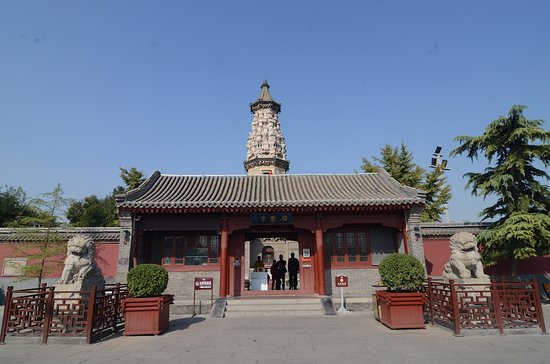
Guanghui Temple Pagoda.
Planning Your Visit: A Practical Guide
Your Essential Guide to Visiting Guanghui Temple Pagoda
Nestled in the historic town of Zhengding, the Guanghui Temple Pagoda (广惠寺华塔) stands as a testament to China’s rich cultural heritage and architectural prowess. Here’s everything you need to know to make the most of your visit.
Getting There
Location:
Guanghui Temple is located on Shengmin Street in Zhengding County, Hebei Province, approximately 20 minutes by taxi from the city center of Shijiazhuang.
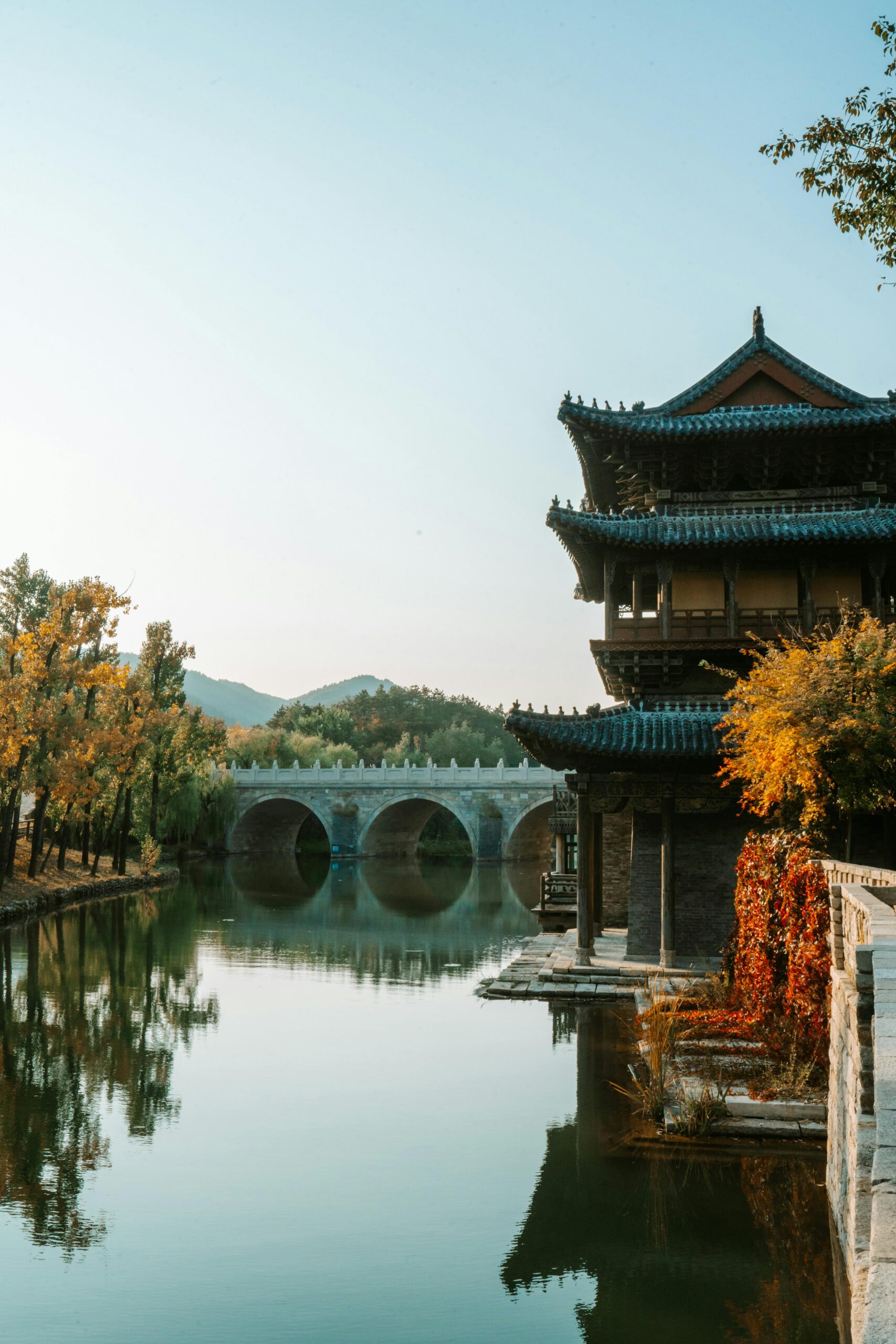
Guanghui Temple Pagoda.
Public Transport:
– Bus: Take bus number 177 from the Hebei Medical University bus stop (河北医大) north of the stadium on Zhongshan Road. Disembark at Zhengding Nanmen (正定南门).
– Taxi: A taxi ride from Shijiazhuang is straightforward and convenient, allowing you to relax and take in the scenery.
Opening Hours
The temple and pagoda are open 24 hours a day, making it accessible for early risers or late-night explorers. The site is beautifully illuminated after dark, offering fantastic opportunities for night photography.
Admission Fees
- Temple Entry: Free
- Pagoda Climb: 15 RMB to climb up to just below the ‘flower’ section of the pagoda.
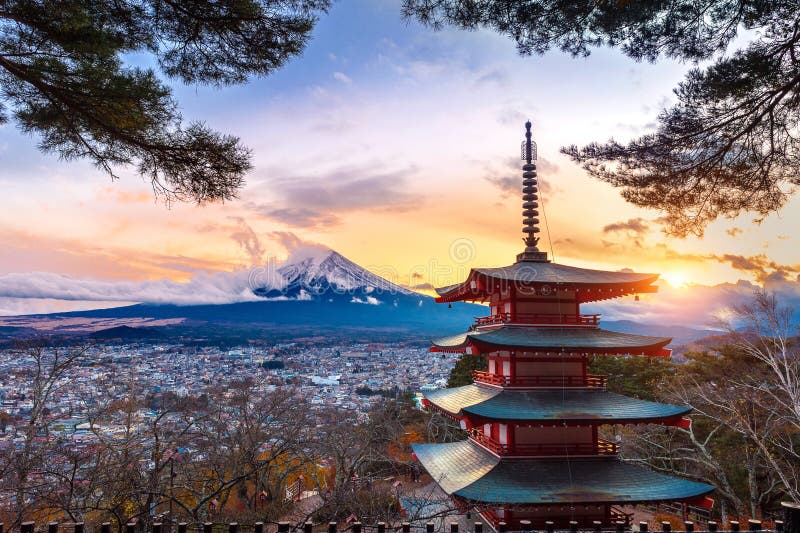
Guanghui Temple Pagoda.
What to Expect
Architectural Marvel:
The Guanghui Temple Pagoda, dating back to the Tang Dynasty, is renowned for its striking design, resembling a bouquet of flowers, which is reflected in its very name—Huata (花塔). The pagoda is adorned with intricate sculptures of Buddhas, elephants, and lions, showcasing the artistry of ancient Chinese craftsmanship.
Beautiful Grounds:
The temple is surrounded by manicured gardens, providing a serene atmosphere that invites reflection and appreciation of the beauty surrounding you.
Cultural Insights:
While visiting, don’t miss the collection of stele found during excavations in Zhengding, located at the back of the temple. These artifacts provide fascinating insight into the temple’s history and significance. Look out for signs with basic explanations in English to enrich your understanding.
Nearby Attractions
Zhengding is home to several other historical sites worth exploring. Here are a few recommendations:
- Longxing Temple (Big Buddha Temple): A prominent Buddhist site, known for its towering statue of the Buddha.
- Moni Palace: An ancient ruin showcasing the architectural styles of previous dynasties.
- Rongguo House: A historic residence that offers insights into local culture and history.
Tips for Visitors
- Plan for the Weather: The summer months can be hot, so consider visiting in the evening when temperatures cool down. Night visits are particularly magical with the temple’s lighting.
- Photography: Bring your camera! The pagoda and its surroundings offer stunning photo opportunities both during the day and at night.
- Local Guides: If time permits, hiring a local guide can significantly enhance your experience. They can provide in-depth historical context and share stories that you might not find in guidebooks.
Dining Options
While there is only one restaurant, HuangGong Restaurant, within a short distance, you can also explore local eateries in Zhengding for a taste of authentic Hebei cuisine.
Conclusion
A visit to Guanghui Temple Pagoda is more than just a sightseeing trip; it’s an immersion into the depths of Chinese history and spirituality. With its stunning architecture, tranquil gardens, and rich cultural significance, it promises an unforgettable experience for any traveler keen on exploring the heart of China’s heritage.
Tickets: Prices, Booking, and Tips
Visiting the Guanghui Temple Pagoda (广惠寺华塔) is a culturally enriching experience that transports you back to the Tang Dynasty, offering a glimpse into China’s architectural and spiritual heritage. Here’s all you need to know about ticket prices, booking options, and useful tips for your visit.
Ticket Information
- Entrance Fee:
- Guanghui Temple: Free
- Huata Tower: 15 RMB (approximately $2.30 USD) to climb up to the observation area just below the flower-shaped top.
Booking Details
-
Advance Booking: Tickets for Huata Tower can typically be purchased on-site. However, during peak tourist seasons, it’s advisable to arrive early to avoid long queues, especially if you wish to climb the pagoda.
-
Payment Methods: Cash is widely accepted, but many travelers prefer using mobile payment apps. Ensure you have a Chinese payment app set up (like WeChat Pay or Alipay) for a smoother transaction.
Visiting Hours
- Operating Hours: The temple is open 24 hours, making it a fantastic spot for both daytime exploration and evening photography. The pagoda area is well-lit, creating a beautiful ambiance for night visits.
Getting There
- Location: Guanghui Temple is located in Zhengding County, Hebei Province, about a 20-minute drive from the center of Shijiazhuang.
- Transportation Options:
- Taxi: A cab ride is convenient and relatively inexpensive.
- Public Transport: You can take bus 177 from the Hebei Medical University bus stop to Zhengding Nanmen (正定南门). A short walk will lead you to the temple. Be aware that if you’re using a transport card, you may need to pay twice when changing zones.
Tips for Your Visit
-
Best Time to Visit: Early morning or late afternoon to avoid scorching heat and crowded conditions. The pagoda is particularly stunning just before sunset.
-
Photography: The illuminated pagoda at night provides a spectacular backdrop for photography, so don’t forget your camera!
-
Explore the Surroundings: Take your time to explore the beautifully manicured grounds and the collection of historical steles located behind the temple. Look out for signs with English explanations to enhance your understanding of the site.
-
Local Guides: Consider hiring a local guide to enrich your experience with insights into the history and significance of the temple and pagoda.
By planning your visit with these tips in mind, you can fully immerse yourself in the history and beauty of the Guanghui Temple Pagoda, making your trip to Zhengding a memorable one.
How to Get There: A Complete Transportation Guide
Reaching the Majestic Guanghui Temple Pagoda: Your Transportation Guide
Visiting the Guanghui Temple Pagoda, a stunning example of Tang Dynasty architecture located in Zhengding County, Hebei Province, is an enriching experience for any traveler interested in Chinese history and culture. Here’s a comprehensive guide on how to get there.
Getting to Zhengding County
1. Travel by Air:
– Nearest Airport: The closest airport is Shijiazhuang Zhengding International Airport (SJW), located approximately 30 kilometers from Zhengding County.
– From the Airport: You can take a taxi directly to the temple, which takes about 40 minutes. Alternatively, you can catch airport shuttle buses to Shijiazhuang city and then transfer to local transportation to reach Zhengding.
2. By Train:
– Train Stations: The main railway station in Shijiazhuang offers high-speed trains from major cities like Beijing and Tianjin.
– From Shijiazhuang Train Station: Upon arrival, you can take a taxi or an intercity bus to Zhengding. The journey takes around 30 minutes by taxi.
3. Traveling by Bus:
– Local Buses: If you’re already in Shijiazhuang, take bus line 177 from the Medical University bus stop (河北医大) heading towards Zhengding Nanmen (正定南门). The bus ride will take approximately 45 minutes.
– Note: If you are using a transport card, be aware that you may need to pay twice when crossing payment zones.
Reaching Guanghui Temple Pagoda
Once you arrive in Zhengding County, the Guanghui Temple Pagoda is easily accessible:
1. By Taxi:
– Taxis are available throughout Zhengding. Simply tell the driver “Guanghui Temple” (广惠寺), and they will know the destination. The ride from Zhengding Nanmen bus stop will take about 10 minutes.
2. Walking:
– For those who enjoy a bit of stroll, the pagoda is within walking distance from the Zhengding city center. After arriving at Zhengding Nanmen, you can follow the signs or consult a map available at various points in the walled town. The walk is scenic and allows you to soak in the local atmosphere.
3. Self-Driving:
– If you prefer to drive, the pagoda is easily reachable via major roads from Shijiazhuang. There is parking available near the temple.
Visiting Hours and Tips
- Opening Hours: The Guanghui Temple Pagoda is open 24 hours a day, with the grounds brightly lit until 11 PM, making it ideal for evening visits and photography.
- Entrance Fees: Entrance to the temple is free, while climbing to just below the flower part of the pagoda costs around 15 RMB.
- Best Time to Visit: Early mornings or evenings are recommended to avoid the heat of summer, and the nighttime lighting makes for enchanting views.
Nearby Attractions
While in Zhengding, consider exploring other significant sites nearby such as the Longxing Temple (Big Buddha Temple), Moni Palace, and Zhaoyun Temple. Each offers a unique glimpse into China’s rich historical tapestry.
With this transportation guide, your journey to Guanghui Temple Pagoda will be smooth and enjoyable, allowing you to delve deep into the exquisite beauty and history of this remarkable site. Safe travels!
Local Cuisine and Accommodation Nearby
When visiting the enchanting Guanghui Temple Pagoda in Zhengding County, immerse yourself not only in its rich history but also in the local flavors and comfortable lodging options nearby. Below are some recommendations for dining and accommodation that will enhance your cultural experience.
Local Cuisine
Nearby Restaurants
- HuangGong Restaurant
- Cuisine: Seafood
- Distance: Approximately 0.5 miles from Guanghui Temple
-
Overview: This popular eatery is known for its fresh seafood dishes, offering a taste of local flavors that are sure to delight. The restaurant features a variety of regional delicacies, making it a great spot to unwind after exploring the pagoda.
-
Zhengding Street Food Stalls
- Cuisine: Various
- Distance: Located throughout the walled town
-
Overview: Take a stroll through the streets of Zhengding and discover an array of food stalls serving local snacks such as jianbing (Chinese crepes), baozi (steamed buns), and chuan (grilled skewers). This is an excellent way to sample authentic street food while mingling with locals.
-
Longxing Temple Vegetarian Restaurant
- Cuisine: Vegetarian
- Distance: About 0.8 miles from Guanghui Temple
- Overview: Situated near the Longxing Temple, this peaceful vegetarian restaurant offers a delightful menu featuring dishes made from fresh, locally sourced ingredients. It’s ideal for those seeking a serene dining experience.
Accommodation Options
Nearby Hotels
- Zhengding International Hotel
- Rating: 4 stars
- Distance: Approximately 2 miles from Guanghui Temple
-
Overview: A modern hotel offering comfortable rooms equipped with all the amenities needed for a relaxing stay. It features a restaurant, fitness center, and business facilities, making it suitable for both leisure and business travelers.
-
Yijia Express Hotel
- Rating: Budget-friendly
- Distance: About 1 mile from the temple
-
Overview: For budget-conscious travelers, this express hotel provides affordable accommodation without sacrificing comfort. With simple, clean rooms and a friendly atmosphere, it’s a practical choice for those who plan to explore.
-
Zhengding Ancient Town Boutique Hotel
- Rating: Boutique style
- Distance: Within walking distance to the temple
- Overview: Experience traditional Chinese architecture and decor at this charming boutique hotel. With its intimate setting and personalized service, it offers a unique glimpse into the local culture while being conveniently located near several historical sites.
Conclusion
Whether you’re indulging in the local cuisine or resting in one of the comfortable accommodations nearby, your visit to Guanghui Temple Pagoda will be enriched by the flavors and hospitality of Zhengding County. Enjoy a journey that combines history, culture, and culinary delights as you explore this captivating area of China.
Frequently Asked Questions
Frequently Asked Questions about Guanghui Temple Pagoda
1. What is the history of Guanghui Temple and the Huata Tower?
Guanghui Temple, known as 广惠寺, features the Huata Tower, a stunning pagoda from the Tang Dynasty. The tower, also referred to as the “Flower Tower,” symbolizes the artistic architecture of ancient China. It stands as a testament to the region’s rich cultural and historical heritage, dating back to the Tang Dynasty, with further developments during the Song and Ming dynasties.
2. Are there any entrance fees?
Visiting Guanghui Temple is free of charge. However, if you wish to climb the pagoda up to the ‘flower’ section, a small fee of 15 RMB is required.
3. What are the opening hours for Guanghui Temple?
The temple is open 24 hours a day, allowing visitors to explore at their convenience. It’s particularly beautiful at night when illuminated, making it a great spot for evening photography.
4. How can I get to Guanghui Temple?
Guanghui Temple is easily accessible from Shijiazhuang, approximately a 20-minute cab ride away. Alternatively, you can take bus 177 from the medical university bus stop to Zhengding Nanmen, then walk into the walled town using a provided map to navigate to the temple.
5. What facilities are available for international visitors?
The temple grounds are equipped with signs that provide basic explanations in English, making it easier for international travelers to appreciate the site’s history.
6. Is there parking available at the temple?
Yes, there is parking available near the temple. However, since the area can get busy, it is advisable to arrive early, especially on weekends or holidays.
7. Can I take photographs at the temple?
Absolutely! Photography is encouraged, particularly during the evening when the pagoda is beautifully lit. Visitors often take advantage of the picturesque surroundings for memorable photos.
8. Are there other attractions nearby?
Yes, there are several historical sites within walking distance, including other temples like Longxing Temple and Zhaoyun Temple, as well as charming streets and local shops that offer a glimpse into the culture of Zhengding County.
Final Thoughts on Your Trip
As your journey draws to a close, reflecting on the serene beauty and historical significance of Guanghui Temple Pagoda invites a sense of gratitude for the rich tapestry of Chinese culture you’ve immersed yourself in. Nestled in the charming town of Zhengding, this remarkable site offers more than just a glimpse into the Tang Dynasty; it presents a unique opportunity to connect with a past that continues to shape the present.
A Few Final Thoughts:
-
A Hidden Gem: While many travelers flock to more famous attractions, Guanghui Temple and its stunning pagoda stand as a testament to the enduring allure of China’s historical treasures. Its well-preserved architecture and tranquil grounds offer a peaceful retreat from the bustling modern world.
-
Cultural Insights: The temple’s collection of stele and the intricate designs of the Huata Tower reveal stories of devotion and artistry, embodying the spiritual heart of Chinese Buddhism. Take a moment to appreciate the craftsmanship and the historical narratives they convey.
-
Accessibility and Convenience: The ease of access makes this site an appealing choice for those exploring Zhengding. Whether you arrive by taxi or bus, the short journey is undeniably worthwhile, allowing you to experience the rich cultural heritage of Hebei province.
-
Nighttime Magic: Consider a visit after sunset when the pagoda is illuminated, casting a mystical glow that enhances its beauty and provides fantastic opportunities for photography. The cool evening air offers a refreshing alternative to daytime exploration, especially during the summer months.
Embrace the Journey Ahead
As you depart from Guanghui Temple Pagoda, carry with you the stories it has shared and the beauty it has unveiled. Each visit to such sites enriches your understanding of Chinese history and culture, igniting a deeper appreciation for the intricacies of its past. May your travels continue to inspire and transform you, leading you to new adventures in this captivating land. Safe travels!